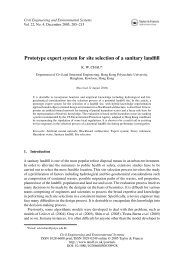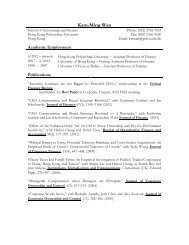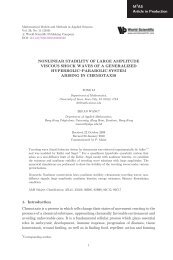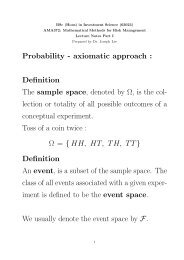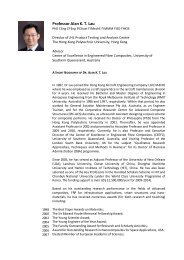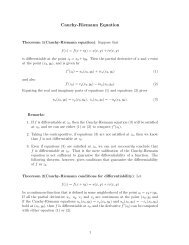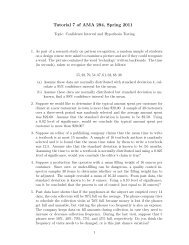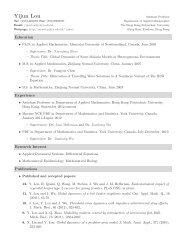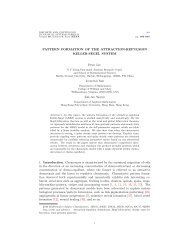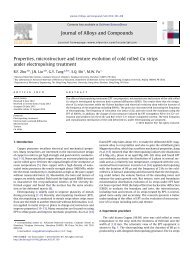DETERMINANTS AND EIGENVALUES 1. Introduction Gauss ...
DETERMINANTS AND EIGENVALUES 1. Introduction Gauss ...
DETERMINANTS AND EIGENVALUES 1. Introduction Gauss ...
Create successful ePaper yourself
Turn your PDF publications into a flip-book with our unique Google optimized e-Paper software.
4. <strong>EIGENVALUES</strong> <strong>AND</strong> EIGENVECTORS FOR n × n MATRICES 95Use <strong>Gauss</strong>-Jordan reduction⎡ ⎤ ⎡ ⎤⎣ 0 4 34 0 0⎦ →···→⎣ 0 1 3/4⎦.3 0 00 0 0The general solution isv 1 =0v 2 =−(3/4)v 3with v 2 free. Thus the general solution vector is⎡ ⎤ ⎡0v = ⎣ −(3/4)v 3⎦ = v 3⎣ 0⎤−3/4 ⎦ .v 31Put v 3 = 4 to obtain a single basis vector⎡v 2 = ⎣ 0⎤−3 ⎦4for the eigenspace corresponding to the eigenvalue λ = <strong>1.</strong> The set of eigenvectorsfor this eigenvalue is the set of non-zero multiples of v 2 .Finally, take λ = −4, and put this in (6) to obtain the system⎡⎣ 5 4 3⎤⎡4 5 0⎦⎣ v ⎤1v 2⎦ =0.3 0 5 v 3Solve this by <strong>Gauss</strong>-Jordan reduction.⎡⎣ 5 4 3⎤ ⎡4 5 0⎦ → ⎣ 1 −1 3⎤ ⎡4 5 0⎦ → ⎣ 1 −1 3⎤0 9 −12 ⎦3 0 5 3 0 5 0 3 −4⎡→ ⎣ 1 −1 3⎤ ⎡0 3 −4⎦ → ⎣ 1 0 5/3⎤0 1 −4/3⎦.0 0 0 0 0 0The general solution isv 1 = −(5/3)v 3v 2 =(4/3)v 3with v 3 free. The general solution vector is⎡v = ⎣ −(5/3)v ⎤ ⎡3(4/3)v 3⎦ = v 3⎣ −5/3⎤4/3 ⎦ .v 3 1



